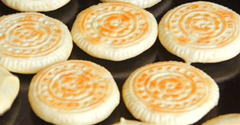News
Treasures from the past in Shanxi
Updated:2015-11-07 08:07By Harvey Morris ( China Daily)
 |
|
The Fenhe River park in Linfen. [Photo by Harri Jarvelainen/For China Daily] |
Some of the city that lies beneath the loess has been uncovered to reveal elite tombs and other urban construction dating back to 4,200 BC. A decade ago, archaeologists located the remains of an ancient observatory��China's oldest��that matched Emperor Yao's legendary reputation as an astronomer king. Experts have recreated 13 pillars that once directed the sun's rays at midsummer and the solstices. The site is immediately reminiscent of Stonehenge, where ancient Britons were erecting their bluestone circle in exactly the same era.
A visit to Shanxi is a visit to China's ancient past, whose civilizing and even religious traditions have re-emerged as models in the modern state. Outside Yuncheng, at the largest Temple of Guan Yu, the second century AD general deified as the Daoist God of War, young and old kneel to offer incense at a state-protected shrine reconstructed in the 18th century. Visitors leave offerings of fruit, spirits, paper crowns, cakes, bolts of cloth and dried sausage, only to retrieve them once they have soaked up good luck from the god.
Elsewhere, there are reminders of a more recent turbulent past. In a quiet corner of Pingyao, a uniformed and decorated octogenarian, Lishen Cun, was holding court. His latest medal commemorates this year's 70th anniversary of China's victory over Japan. He was 12 when he joined the militia and was at the fall of Nanjing. Fingering a deep bullet scar in his forehead, he recalls killing the first of his enemies at 13, one of 32 to die at his hands. His wife smiles lovingly at a story she has heard many times before.
At the Li Family courtyard north of Yuncheng - in reality more a small village than a courtyard - the Lis presided as businessmen and benefactors until almost the middle of the 20th century. The scion of the family raised children there with his British wife at the time of World War I. A solid door with a complex lock mechanism guards the entrance to one of the elegant courtyards. Sometime in the past, some unwelcome visitors lost patience with the lock and hammered a ragged hole into the woodwork. They were a squad of occupying Japanese soldiers. According to a caption posted by the door, the stout barrier held.



